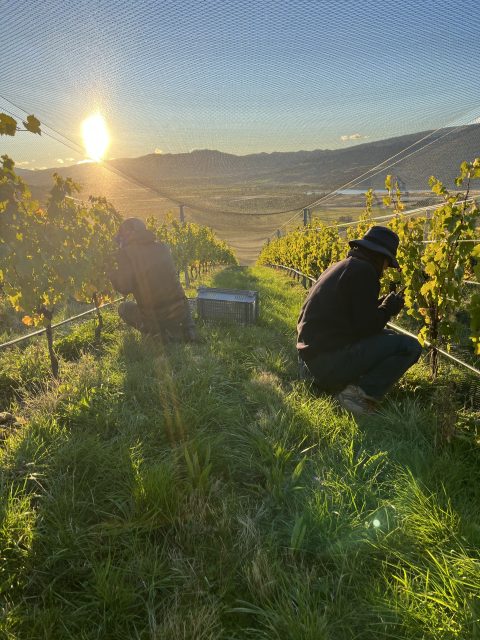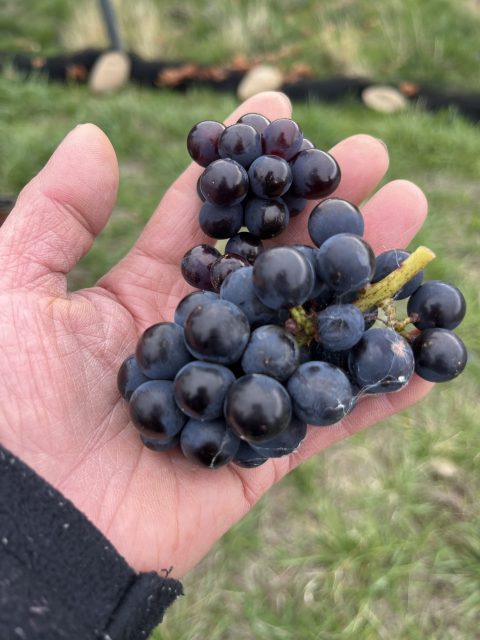Sato Wines – a Central Otago low-intervention wine brand made by Japanese ex-bankers – sometimes shies away from its natural wine identity. Joyce Yip finds out why.

The “natural wine” label that bolstered Sato Wines’ reputation in 2009 – when it was still a nascent category in New Zealand – is one that co-founder Yoshiaki Sato doesn’t always enjoy today.
“People see natural wines as one category, but in reality, they range from funky to classic and everything in between,” he says. “We don’t want to make anything that has haziness or mousiness. Winemakers like Jean-Yves Bizot and Philippe Pacalet made beautiful wines in the most natural way rather than giving strange impressions to the word ‘natural’: that’s what we want to do.”
Sato Wines was founded by Yoshiaki and his wife, Kyoko, who, at then 34- and 37-years old respectively, left their 12-year-long careers at a Japanese bank to take on viticulture and oenology at Christchurch’s Lincoln University. Yoshiaki “wanted to make something by hand”, he says.
They then earned hands-on experience in Felton Road Wines and Mount Edward Winery in New Zealand and, during winters in the Southern hemisphere, took on apprenticeships at the vineyards of Jean-Yves Bizot, Jean-Pierre Frick and Philippe Pacalet in France, to name but a few.

In 2016, Sato Wines evolved beyond purchasing grapes from other vineyards and began growing fruit from its own plot in the Pisa sub-region in Central Otago to make the “Le Ferme de Sato” label – or “Sato’s Farm”. Currently, 3.19 of five total hectares of the vineyard are devoted to Pinot Noir, Chardonnay, Chenin Blanc, Gamay, and Cabernet Franc. Kyoto claims Sato Wines was the first to plant Cabernet Franc in the country.
As non-native, self-made vignerons, Yoshiaki said their journey wasn’t an easy one. The label of “natural wine”, says Yoshiaki, stood them out from the crowd amidst a market that, then, “predominantly made bulk Sauvignon Blancs”, he added.
To date, Sato Wines supplies an annual 28,000 to 32,000 bottles – 60% of which is from its own vineyards – to approximately 17 countries and regions.
In Hong Kong, Sato Wines can be seen at outlets including Yardbird, Roganic, Rosewood Hong Kong and Grand Hyatt Hong Kong, sharing lists with more commercial wines.

Cristobal Huneeus, co-founder of La Cabane Hong Kong, the importer and distributor of Sato Wines’ in Hong Kong and Macau, says the perception of natural wine can create challenges. Natural wines can sometimes conjure images of cloudy bottles with unconventional colour and funkier flavours, and Huneeus says they may be shunned by sommeliers who deem it too flippant for their establishments.
“Presenting something as a natural wine is a difficult approach,” she says. “So instead, for natural wines that are done in a more classical style – like Sato – we promote them with terms like ‘low intervention’ or ‘a wine that brings out the authenticity of the terroir’.”
“We are an agricultural product,” adds Yoshiaki. “No matter how you make the wines, they must be beautiful – natural or not.”
Related news
Champagne Deutz enters its next era
Can fine wine and professional sport be a perfect pairing?
Tourists pay thousands for vineyard ‘workcations’


Dining and Cooking